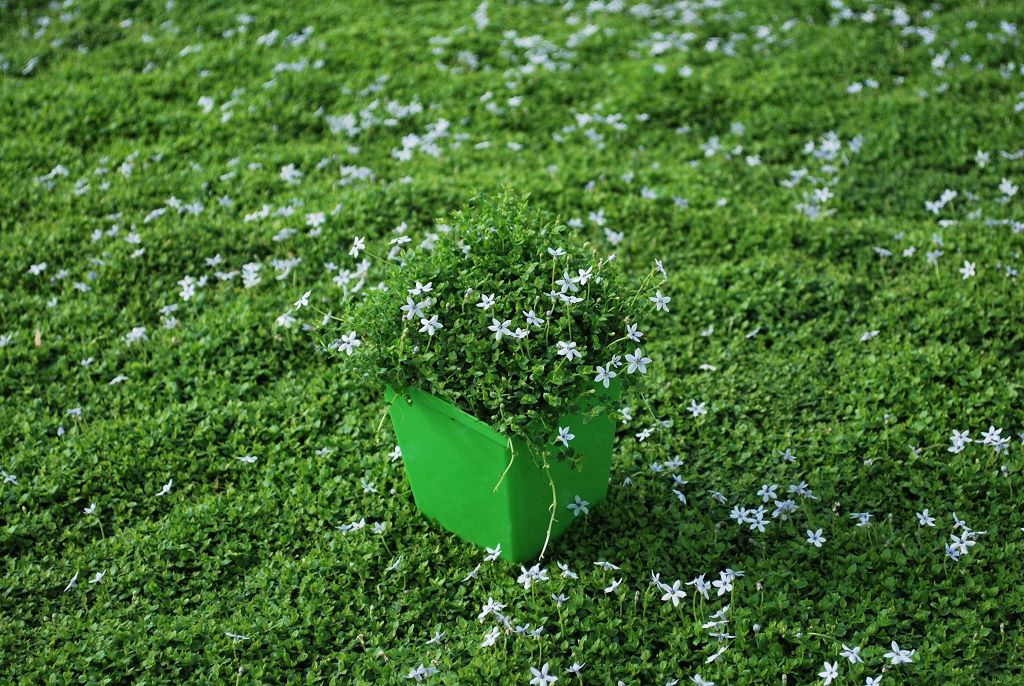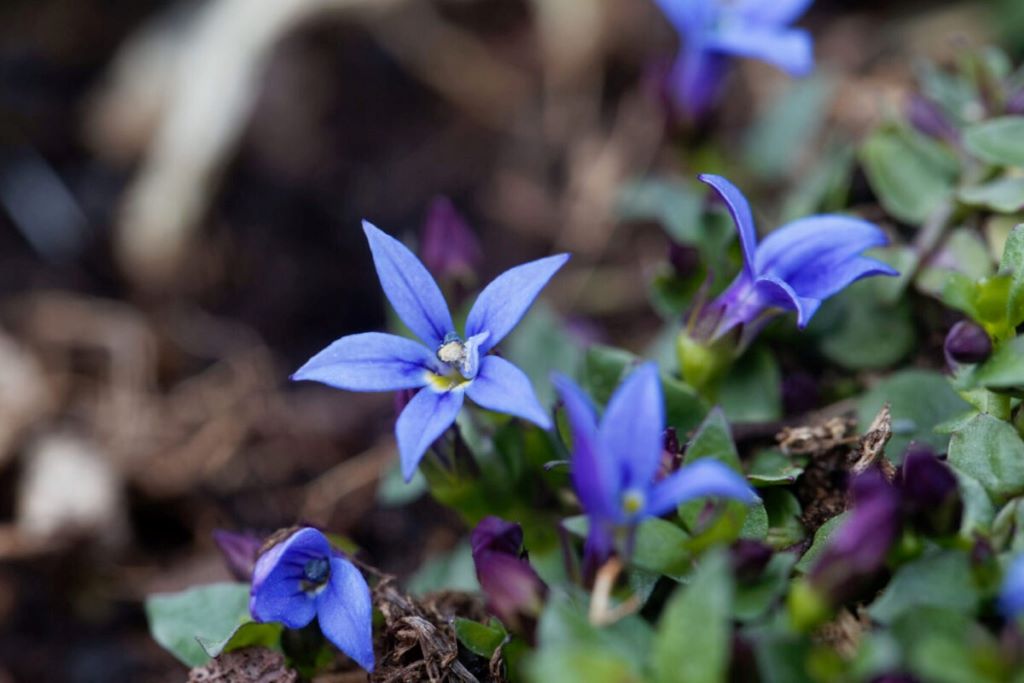Creating an Eco-Friendly Lawn with Isotoma Blue Star Creeper

Creating a sustainable and beautiful lawn doesn’t have to mean sacrificing aesthetics for environmental responsibility. Many homeowners are discovering innovative alternatives to traditional grass lawns that reduce water consumption, eliminate the need for harmful chemicals, and provide year-round visual appeal. One exceptional option gaining popularity among eco-conscious gardeners is the isotoma blue star creeper, a versatile ground cover that transforms ordinary spaces into stunning, low-maintenance landscapes. For expert guidance on sustainable gardening practices, Alices Wonderland Nursery offers comprehensive resources and quality plants for environmentally friendly landscaping projects.
Traditional grass lawns require significant resources to maintain their appearance. They demand frequent watering, regular fertilization, and constant mowing throughout the growing season. However, eco-friendly alternatives like ground covers provide the same visual impact while dramatically reducing maintenance requirements and environmental impact. The isotoma blue star creeper represents an excellent choice for homeowners seeking a sustainable lawn solution that delivers both beauty and practicality.
This remarkable plant offers numerous advantages over conventional turf grass. Additionally, it creates a carpet-like appearance that rivals traditional lawns while supporting local ecosystems and reducing resource consumption. Therefore, understanding how to implement this eco-friendly alternative can help property owners create stunning landscapes that align with sustainable living principles.
Understanding Isotoma Blue Star Creeper
The isotoma blue star creeper, scientifically known as Isotoma fluviatilis, is a low-growing perennial ground cover native to Australia. This hardy plant produces small, star-shaped blue flowers that bloom continuously throughout the growing season, creating a delicate carpet of color across the landscape. The plant typically grows to a height of only two to four inches, making it an ideal lawn substitute that maintains a neat, manicured appearance without regular trimming.
This versatile ground cover thrives in various growing conditions, demonstrating remarkable adaptability to different soil types and moisture levels. Furthermore, its dense growth pattern naturally suppresses weed growth, reducing the need for herbicides and manual weeding. The plant’s root system helps prevent soil erosion while creating a stable surface suitable for light foot traffic.
The blue star creeper’s flowering period extends from spring through fall, providing consistent visual interest throughout the active growing season. Moreover, its evergreen foliage ensures year-round coverage in mild climates, maintaining landscape appeal even during winter months.
Environmental Benefits of Blue Star Creeper Lawns
Choosing isotoma blue star creeper over traditional grass delivers significant environmental advantages that extend beyond the immediate property boundaries. This sustainable ground cover requires substantially less water than conventional turf grass, making it an excellent choice for drought-prone regions or areas with water restrictions. Consequently, homeowners can maintain beautiful landscapes while reducing their environmental footprint and water bills.
The plant’s natural growth characteristics eliminate the need for regular mowing, which reduces carbon emissions from lawn equipment and decreases noise pollution in residential areas. Additionally, blue star creeper thrives without synthetic fertilizers or pesticides, preventing harmful chemicals from entering groundwater systems and protecting beneficial insects and wildlife.
According to the Environmental Protection Agency, traditional lawn care practices contribute significantly to water pollution and greenhouse gas emissions. Therefore, adopting eco-friendly alternatives like isotoma blue star creeper helps homeowners participate in broader environmental conservation efforts while maintaining attractive outdoor spaces.
The dense mat formed by blue star creeper also supports biodiversity by providing habitat for beneficial insects, including pollinators that are essential for healthy ecosystems. Furthermore, this ground cover helps improve soil health through natural processes, creating a self-sustaining landscape that requires minimal external inputs.
Installation and Establishment
Successfully establishing an isotoma blue star creeper lawn requires careful planning and proper installation techniques. The process begins with thorough site preparation, including soil testing to ensure optimal growing conditions. This ground cover prefers well-draining soil with a slightly acidic to neutral pH, though it adapts to various soil compositions with appropriate amendments.
Site preparation involves removing existing vegetation and improving soil structure through the addition of organic matter such as compost or aged manure. However, unlike traditional lawn installation, blue star creeper establishment doesn’t require extensive soil grading or the creation of perfectly level surfaces.
Planting typically involves spacing individual plants or plugs approximately six to twelve inches apart, depending on desired coverage speed and budget considerations. Additionally, proper watering during the establishment period ensures successful root development and rapid coverage of the designated area.
The initial establishment period usually takes one to two growing seasons, during which the plants gradually spread to form a continuous carpet. Therefore, patience during this phase results in a stunning, low-maintenance lawn alternative that provides years of enjoyment with minimal ongoing care.
Maintenance Requirements
One of the most appealing aspects of isotoma blue star creeper is its minimal maintenance requirements compared to traditional grass lawns. Once established, this ground cover requires only occasional watering during extended dry periods, making it ideal for busy homeowners or those seeking low-maintenance landscaping solutions.
Regular maintenance tasks are limited to light weeding during the first year of establishment and occasional trimming of edges to maintain clean boundaries with other landscape features. Moreover, the plant’s natural growth habit eliminates the need for regular mowing, fertilizing, or pest control treatments that characterize traditional lawn care.
Seasonal care involves removing any dead plant material in early spring and applying a thin layer of compost annually to support continued healthy growth. However, these tasks require significantly less time and effort than maintaining conventional turf grass.
The plant’s drought tolerance means established areas can survive extended periods without irrigation, though occasional deep watering during severe drought conditions helps maintain optimal appearance and health.
Design Considerations and Applications
Isotoma blue star creeper offers exceptional versatility in landscape design applications, functioning beautifully as a complete lawn replacement or as an accent ground cover in specific areas. The plant’s delicate texture and continuous flowering create visual interest that complements various architectural styles and existing landscape features.
This ground cover works particularly well in areas where traditional grass struggles, such as slopes, shaded locations, or spaces with irregular irrigation. Additionally, its tolerance for light foot traffic makes it suitable for pathways, between stepping stones, or in small recreational areas.
Design professionals often recommend combining blue star creeper with complementary plants to create layered landscapes that provide seasonal interest and support diverse wildlife populations. Furthermore, the plant’s compact size makes it an excellent choice for small urban gardens or courtyard spaces where traditional lawns may be impractical.
The plant’s evergreen nature ensures year-round landscape structure, while its flowering period provides seasonal color that enhances overall garden design. Therefore, incorporating isotoma blue star creeper into landscape plans creates sustainable, beautiful outdoor spaces that require minimal ongoing maintenance.
Cost Considerations and Long-term Value
While the initial investment in isotoma blue star creeper may exceed traditional grass seed costs, the long-term financial benefits make it an economically sound choice for eco-conscious homeowners. The elimination of ongoing expenses such as fertilizers, pesticides, fuel for mowing equipment, and excessive water usage results in significant savings over time.
Additionally, reduced maintenance requirements translate to valuable time savings for busy property owners who prefer to spend weekends enjoying their outdoor spaces rather than maintaining them. The plant’s longevity and self-sustaining characteristics provide lasting value that continues to appreciate over years of growth.
Property values may also benefit from unique, sustainable landscaping features that appeal to environmentally conscious buyers in today’s real estate market. Moreover, the distinctive appearance of blue star creeper lawns creates memorable landscapes that stand out in residential neighborhoods.
According to real estate professionals at Realtor.com, sustainable landscaping features increasingly influence buyer decisions and can contribute to improved property marketability and value retention.
Conclusion
Creating an eco-friendly lawn with isotoma blue star creeper represents a forward-thinking approach to residential landscaping that balances environmental responsibility with aesthetic appeal. This remarkable ground cover offers numerous advantages over traditional grass, including reduced water consumption, elimination of harmful chemical inputs, and minimal maintenance requirements. The plant’s natural beauty, featuring delicate blue flowers and dense green foliage, creates stunning landscapes that support local ecosystems while reducing homeowner workload and environmental impact. As more property owners recognize the benefits of sustainable landscaping practices, isotoma blue star creeper emerges as an excellent choice for those seeking beautiful, low-maintenance lawn alternatives that align with contemporary environmental values and lifestyle preferences.
Frequently Asked Questions
How long does it take for isotoma blue star creeper to establish a full lawn coverage?
Isotoma blue star creeper typically requires one to two growing seasons to achieve complete coverage when properly installed and maintained. The exact timeline depends on planting density, growing conditions, and local climate factors. Closer initial spacing results in faster coverage but increases upfront costs.
Can blue star creeper handle foot traffic like traditional grass?
Blue star creeper tolerates light to moderate foot traffic but is not as durable as established grass lawns for heavy recreational use. It works well for pathways, occasional walking, and children’s light play activities. However, areas receiving constant heavy traffic may require reinforcement with stepping stones or alternative materials.
What growing conditions does isotoma blue star creeper prefer?
This versatile ground cover thrives in full sun to partial shade conditions with well-draining soil. It prefers slightly acidic to neutral pH levels but adapts to various soil types. The plant demonstrates good drought tolerance once established but benefits from occasional watering during extended dry periods.
Is blue star creeper safe for pets and children?
Isotoma blue star creeper is generally considered safe for pets and children, though it’s always advisable to prevent consumption of any plant material. The plant doesn’t produce toxic compounds that cause serious harm, but individual sensitivities may vary. Consult with veterinarians or pediatricians if you have specific concerns.
How does the cost compare to installing and maintaining traditional grass?
While initial installation costs may be higher than grass seed, blue star creeper provides significant long-term savings through reduced water usage, elimination of fertilizers and pesticides, and minimal maintenance requirements. Most homeowners recover the additional upfront investment within two to three years through reduced ongoing expenses.
Read More:
When is It Too Late to Prune Roses?

